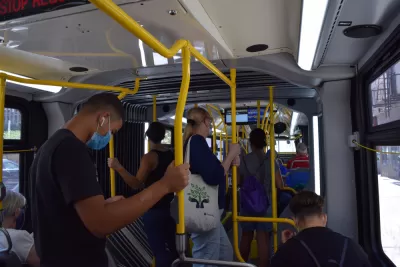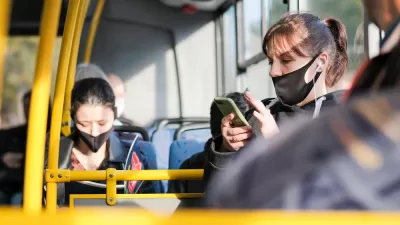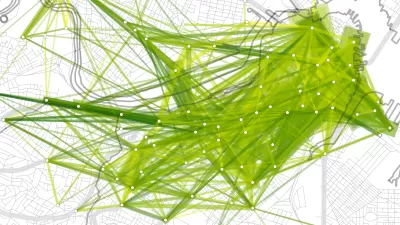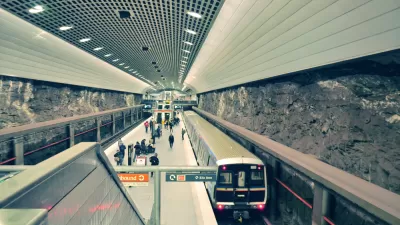While the future of transit ridership depends on a range of still-uncertain factors, the commuter-centric patterns that characterized pre-COVID transit service are probably a thing of the past.

Writing in Seattle Transit Blog, Sherwin Lee acknowledges the uncertainty of the future of post-COVID public transit. “Two years into the pandemic and counting, it’s fairly evident that there has been and will be no ‘v-shaped’ recovery for transit ridership,” Lee writes. “The issue is that many of the variables that go into ridership projections are still riddled with near-term uncertainty,” making it difficult to make any confident predictions about post-pandemic ridership.
But there are some trends worth noting. “Here’s a crude back-of-the-napkin analysis for calculating potential lost ridership: Roughly half of pre-COVID ridership was commuters, of which we might assume a third will now be fully remote, another third will be hybrid (commuting a few days a week), and the remaining third will go back to the office mostly full-time. Rounding out the math, that gives us a quarter of trips that will disappear forever.” Bolstering Lee’s point, “According to APTA, nationwide ridership is still hovering about 50-60% of pre-pandemic levels.”
For Lee, “What does matter is that cities and transit agencies immediately adapt to our new housing and land use reality.” For Lee, this means reducing their reliance on commuters and “downsizing peak-only services and building up frequent all-day cross-town connections,” as well as making more significant changes such as more diverse housing options and mixed-use development in more neighborhoods.
FULL STORY: What will be the new normal for post-COVID ridership?

Maui's Vacation Rental Debate Turns Ugly
Verbal attacks, misinformation campaigns and fistfights plague a high-stakes debate to convert thousands of vacation rentals into long-term housing.

Planetizen Federal Action Tracker
A weekly monitor of how Trump’s orders and actions are impacting planners and planning in America.

In Urban Planning, AI Prompting Could be the New Design Thinking
Creativity has long been key to great urban design. What if we see AI as our new creative partner?

Chicago’s Ghost Rails
Just beneath the surface of the modern city lie the remnants of its expansive early 20th-century streetcar system.

Baker Creek Pavilion: Blending Nature and Architecture in Knoxville
Knoxville’s urban wilderness planning initiative unveils the "Baker Creek Pavilion" to increase the city's access to green spaces.

Pedestrian Deaths Drop, Remain Twice as High as in 2009
Fatalities declined by 4 percent in 2024, but the U.S. is still nowhere close to ‘Vision Zero.’
Urban Design for Planners 1: Software Tools
This six-course series explores essential urban design concepts using open source software and equips planners with the tools they need to participate fully in the urban design process.
Planning for Universal Design
Learn the tools for implementing Universal Design in planning regulations.
planning NEXT
Appalachian Highlands Housing Partners
Mpact (founded as Rail~Volution)
City of Camden Redevelopment Agency
City of Astoria
City of Portland
City of Laramie





























